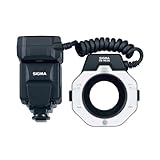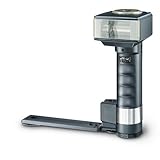Achieving a sharp image is every photographer’s aim but it is something that can be hard to get. To look at how sharp image can be achieved, there are following factors that you need to know:
1. Aperture Aperture affects depth of field. Depth of field means the degree of acceptable sharpness in front of and behind the subject in focus. If you will to increase your aperture value, you will notice that your pictures will get sharper. If you will to decrease it, your subject will still in focus but your background and foreground will be out of focus. Keep in mind that if you will to increase your aperture value, you will need a slower shutter speed or a high ISO to combat camera shake.
Aperture affects depth of field. Depth of field means the degree of acceptable sharpness in front of and behind the subject in focus. If you will to increase your aperture value, you will notice that your pictures will get sharper. If you will to decrease it, your subject will still in focus but your background and foreground will be out of focus. Keep in mind that if you will to increase your aperture value, you will need a slower shutter speed or a high ISO to combat camera shake.
2. Shutter speed Using a higher shutter speed will help to keep your picture sharp. By using a higher shutter speed, you are freezing the motion as well as minimize handshaking. You may wonder what shutter speed you need to use in order to get a sharp pictures. As a guideline, for a handheld camera, you should choose shutter speed that is more than 1/focal length. For example, if you are shooting at 100mm, you choose shutter speed at 1/125. Keep in mind that, if you are using a high shutter speed, you will need to lower your aperture value to compensate for the high shutter speed.
Using a higher shutter speed will help to keep your picture sharp. By using a higher shutter speed, you are freezing the motion as well as minimize handshaking. You may wonder what shutter speed you need to use in order to get a sharp pictures. As a guideline, for a handheld camera, you should choose shutter speed that is more than 1/focal length. For example, if you are shooting at 100mm, you choose shutter speed at 1/125. Keep in mind that, if you are using a high shutter speed, you will need to lower your aperture value to compensate for the high shutter speed.
3. Use high ISO
ISO refers to the sensitivity of the sensor. A high ISO means the sensor is very sensitive to the light, thus you will need a high shutter speed or a high aperture value to get a proper exposure. However, a high ISO also necessarily means that your picture will get pixilated and this is not desirable. Depending on the model of the camera, some camera will not get pixilated as you increase ISO. If you encountered pixilation while increasing your ISO, the best thing is to use maximum ISO that will not result in pixilation.
4. Use tripod or any stabilized platform
Using a tripod is extremely useful in certain situation such as taking firework or taking self portrait but tripod can be quite a hassle to carry around and setting up. Try to see if the situation allows you to set up a tripod, if not look around to see if there is any stabilized platform that can support your camera.
5. Use image stabilizer
Most new digital cameras nowadays carry an image stabilizer (IS) feature that can help to combat hand shake. For some digital SLR, the image stabilizer feature is not carried in the camera but in the len. Purchasing a len with IS feature is expensive. If your budget can afford it, you should try to get it or otherwise you look for other alternative to help to keep your image sharp. Bear in mind that IS can help to minimize camera shake and NOT subject movement.
6. Use flash
If you find that flash is permitted, then you can use flash to help you freeze the subject. If you are using direct flash, try to position your subject such that the distance between subject to background is far apart. This is to eliminate harsh tone resulted from the direct flash.



7. Focusing
Most of us use the auto focus feature in the camera to focus the subject. You must know that the camera auto focus system may not be always correct. Poor focusing will result in blur image which is not desirable. You should check your image to see if you are focusing on the right subject before pressing the shutter. If you find that the subject that the camera focuses isn’t what you want, try to do a manual focusing if possible. Some lens in digital SLR allow you to manually override the auto focusing system (i.e you can do a auto focus, but if you find that the camera doesn’t focus what you want, you can adjust your focusing ring on your len instead of switching to manual focus on your len).
8. Len sweet spot
Len usually has a sweet spot about 2-3 stops away from its maximum aperture to allow you to get a sharp image. So instead of taking pictures at the maximum aperture that your len offer, you should adjust it to a few stops away and you will get pictures with better details.
9. Hold your camera steadily
Most blur images are resulted from improper handling of the cameras. Using one hand to take pictures is not advisable as you will increase the chance of handshake. Therefore, to minimize it, try holding your camera using both hands and hold it close to your body for support. For digital SLR users, you might find it useful to combat handshake by taking a deep breath when you half-press your shutter and hold it as you press your shutter.
10. Clean you len often
Try to clean your len often to eliminate any dust and smudges. You don’t want to see any blotches in your images and end up having to edit your images. Smudges can also impact your camera by reducing the amount of available light into your camera thus the reading may not be accurate.
With these factors that are listed here, you have a clearer idea on how to take a sharp picture!
Welcome to the Digital Photography Academy! This site offers some tips and techniques to improve one's photography skills and some creative ways to manipulate pictures and shooting styles. For a start, feel free to look at the terminology guide.
 Subscribe in a Digital Photography Academy
Subscribe in a Digital Photography Academy
Recent updates
Friday, June 19, 2009
10 ways to get sharp pictures
Subscribe to:
Post Comments (Atom)

0 comments:
Post a Comment